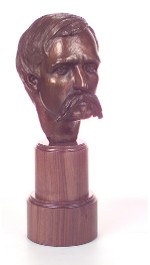| Gettysburg
is hallowed ground.
What many people
don't understand about the battle is that the entire town and
the surrounding fields and farms ARE the battlefield. Union troops withdrew
through the town at the end of the first day of the battle. Confederate
troops at the height of the battle on July 2, 1863, had wrapped around
the southwest (left) and northeast (right) flanks of the Union line, threatening
to encircle and besiege McClellan's forces. Ewell's line of battle ran
through the center of town.
Gettysburg is hallowed
ground.
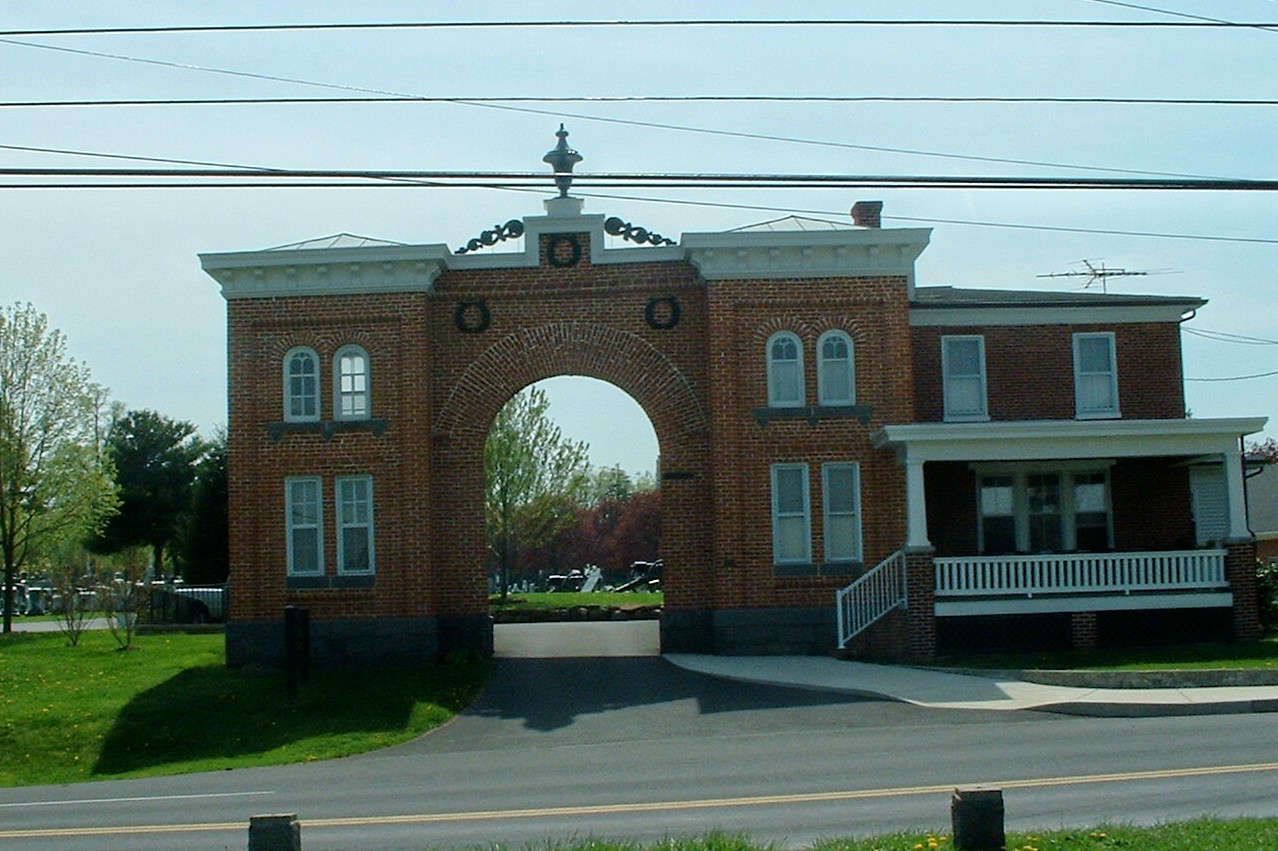
When you see contemporary
lithographs from Gettysburg, quite often you see an arch in the print.
The arch marks the entrance to Evergreen Cemetery, whence the name of
Cemetery Hill.
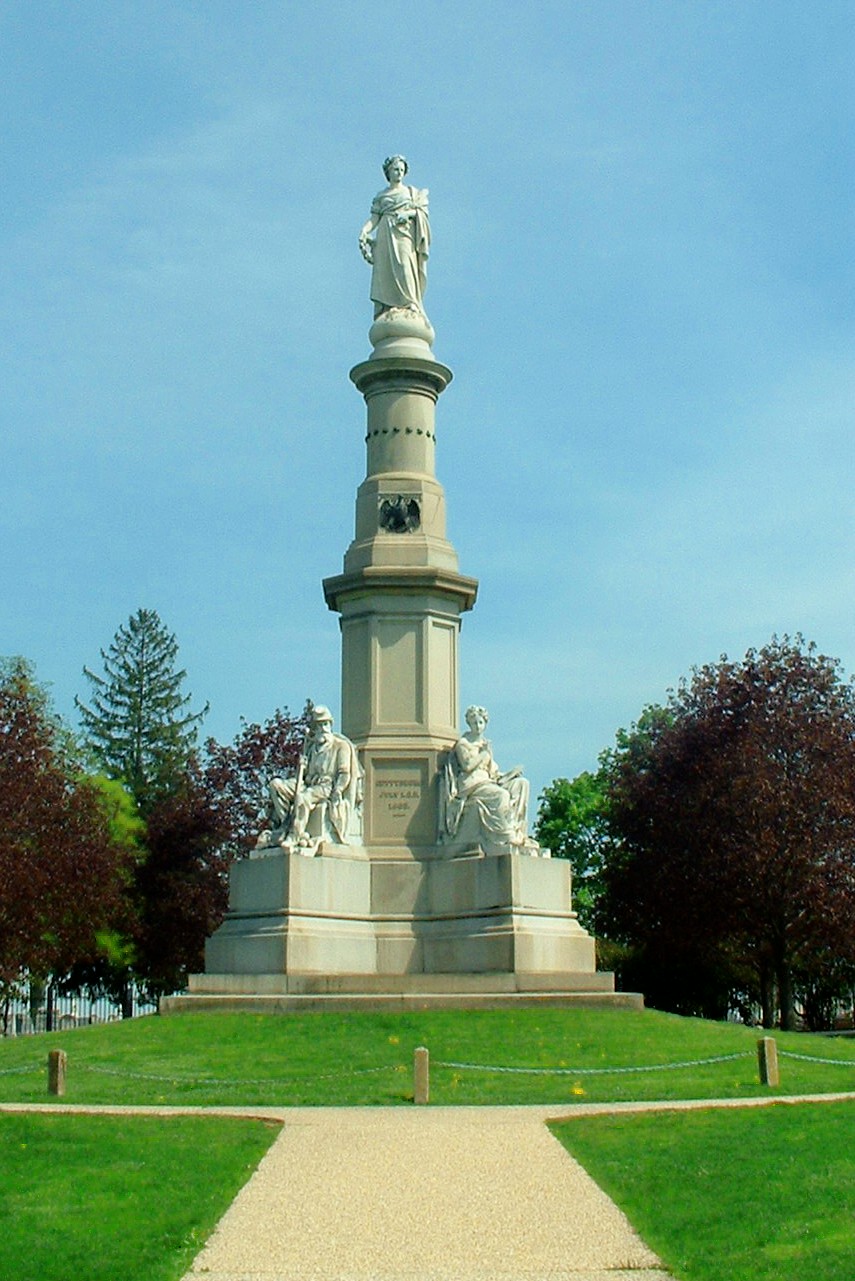
The Gettysburg National
Cemetery occupies land purchased from the Evergreen Cemetery Society for
the purposes of burying the Union dead from the battle; later, it was
opened to qualifying veterans of military campaigns through Vietnam and
their spouses and dependent children. The only remaining plots available
for use are designated for dependents of veterans buried before the cemetery
closed in 1972. The picture above is of the Soldiers' National Monument,
which occupies the center of a semicircular copse containing the graves
of 3,555 soldiers - mostly Union - who died at Gettysburg. The Unknown
section contains 979 graves; New York state lost the most soldiers on
the field of any Union state.
Confederate
soldiers were buried with great respect but no individual markers after
the battle. After the war, over 3,000 bodies were transferred to Hollywood
Cemetery in Richmond, Virginia for proper interment. Despite the best
efforts of the local mortician and his dedicated crew to guarantee that
"no Confederates are buried in this cemetery," there are at
least 9 known Confederate soldiers in the National Cemetery, including
the one below. Apparently, he was originally identified as being from
Massachusetts, but a record search in the 1960's or 70's showed no one
by the name of J. L. Johnson ever served with Massachusetts troops. There
was, however, a J. L. Johnson in a Mississippi unit listed as killed in
action at Gettysburg. If you look closely, you can see the MS stenciled
in on the unit line in recognition of this new knowledge.
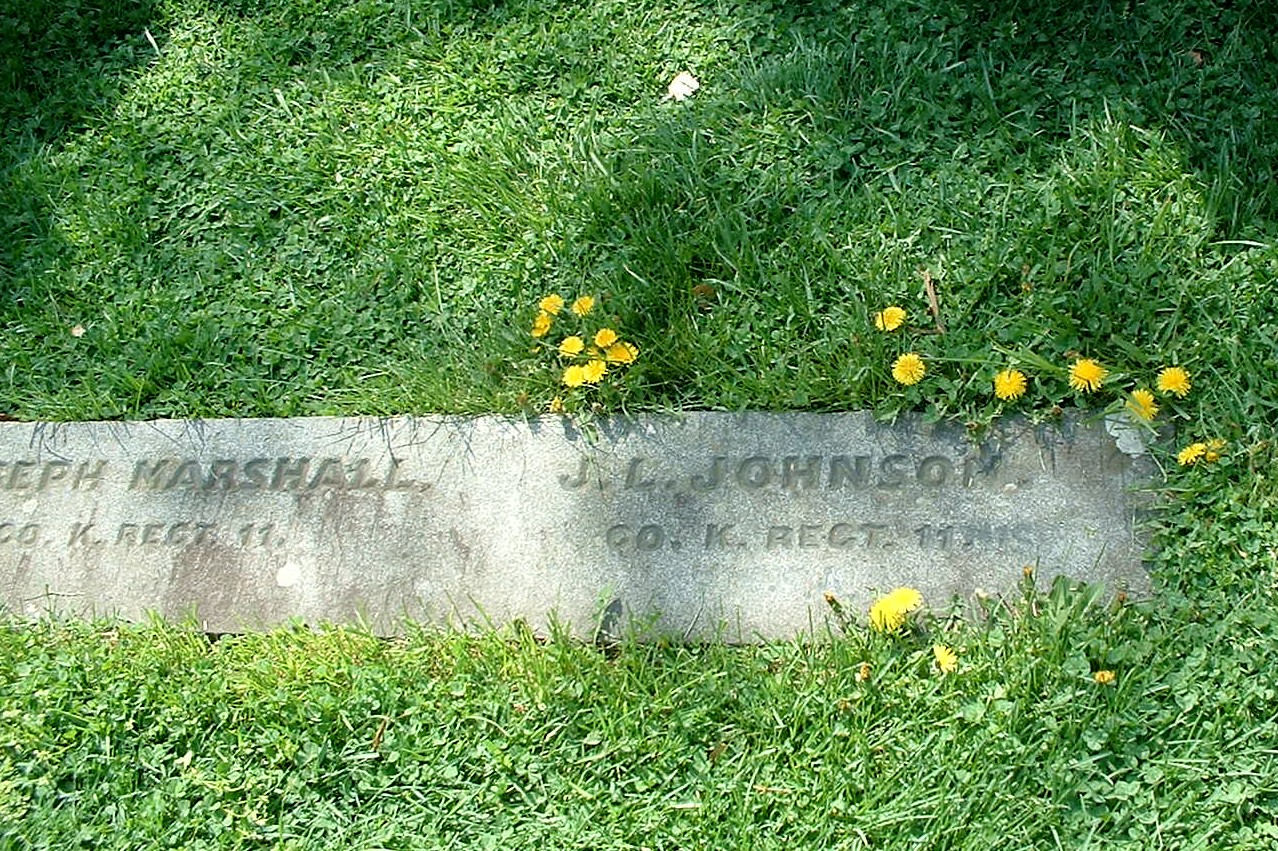
Did
you know that Richard Nixon's great-grandfather fought and died at Gettysburg?
Me, neither. But he did, and he's buried in the cemetery with the other
dead soldiers from Ohio. He left nine children and a wife behind - one
of those nine moved to California and had a son who had a son who was
Richard Milhous Nixon.
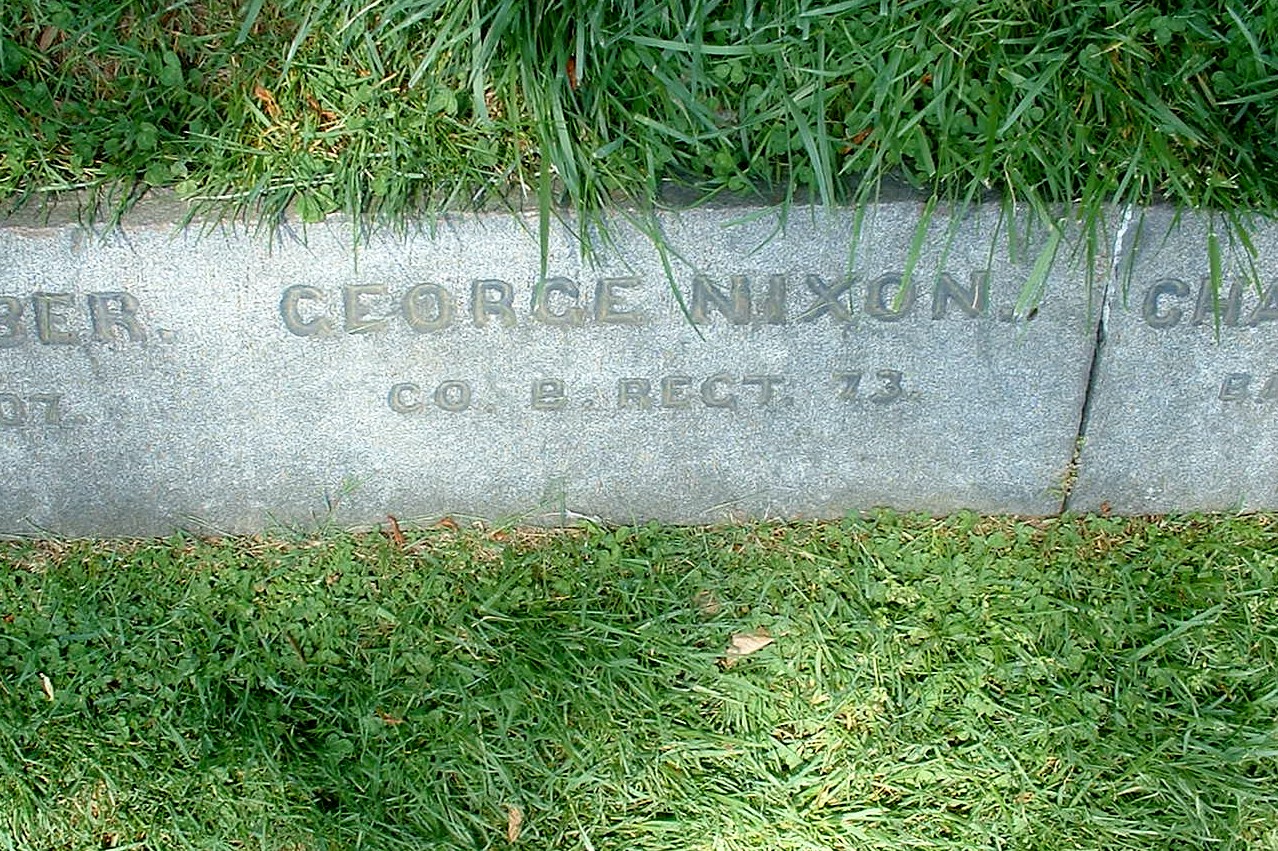
Once
I had seen the museum at the Visitor's Center and taken the cemetery tour,
it was time to get an overview of the battlefield itself. I decided, given
that I was only there for the day, to do the self-guided auto tour. Someday,
I'll go back with at least one or two other people and get a licensed
guide, but for me this trip, the signs and monuments were enough to get
me through.
The
tour starts at McPherson Ridge, where the battle started on July 1, 1863.
This high ground to the northwest of the town became the first battleground
in the area when Confederate forces under General Henry Heth met Union
forces under Major General John Fulton Reynolds - the highest ranking
officer to die in the entire battle and the first commander to die. Late
in the day, General Abner Doubleday (of Ft. Sumter and baseball fame)
ordered his new command to retreat fighting as General Richard Ewell's
fresh Confederate forces swarmed the Union troops from three sides.
Fighting
that day extended to the northeast along Oak Ridge, as well. At the northernmost
point of the battle lines, veterans established a peace monument with
an eternal flame. The daytime pictures of the monument didn't work, but
this view of the battlefield from the north looking down the ridges toward
Little and Big Round Tops (behind the trees on the left) shows the extent
of the ground covered during those three days:
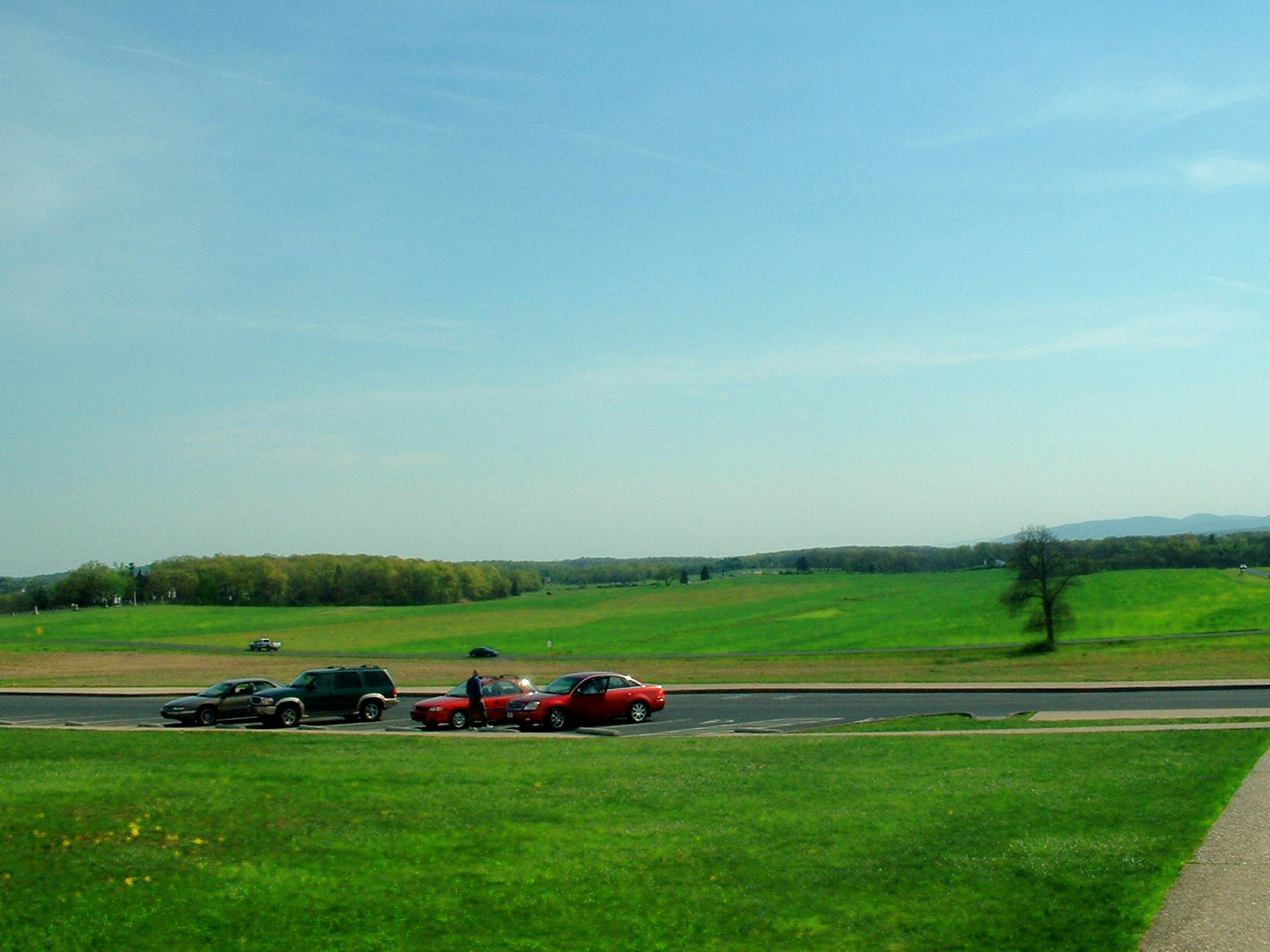
This
picture is taken from the observation tower at Oak Ridge looking back
into Gettysburg, roughly along the Union line of retreat. The buildings
at the edge of town are on the campus of Gettysburg College.
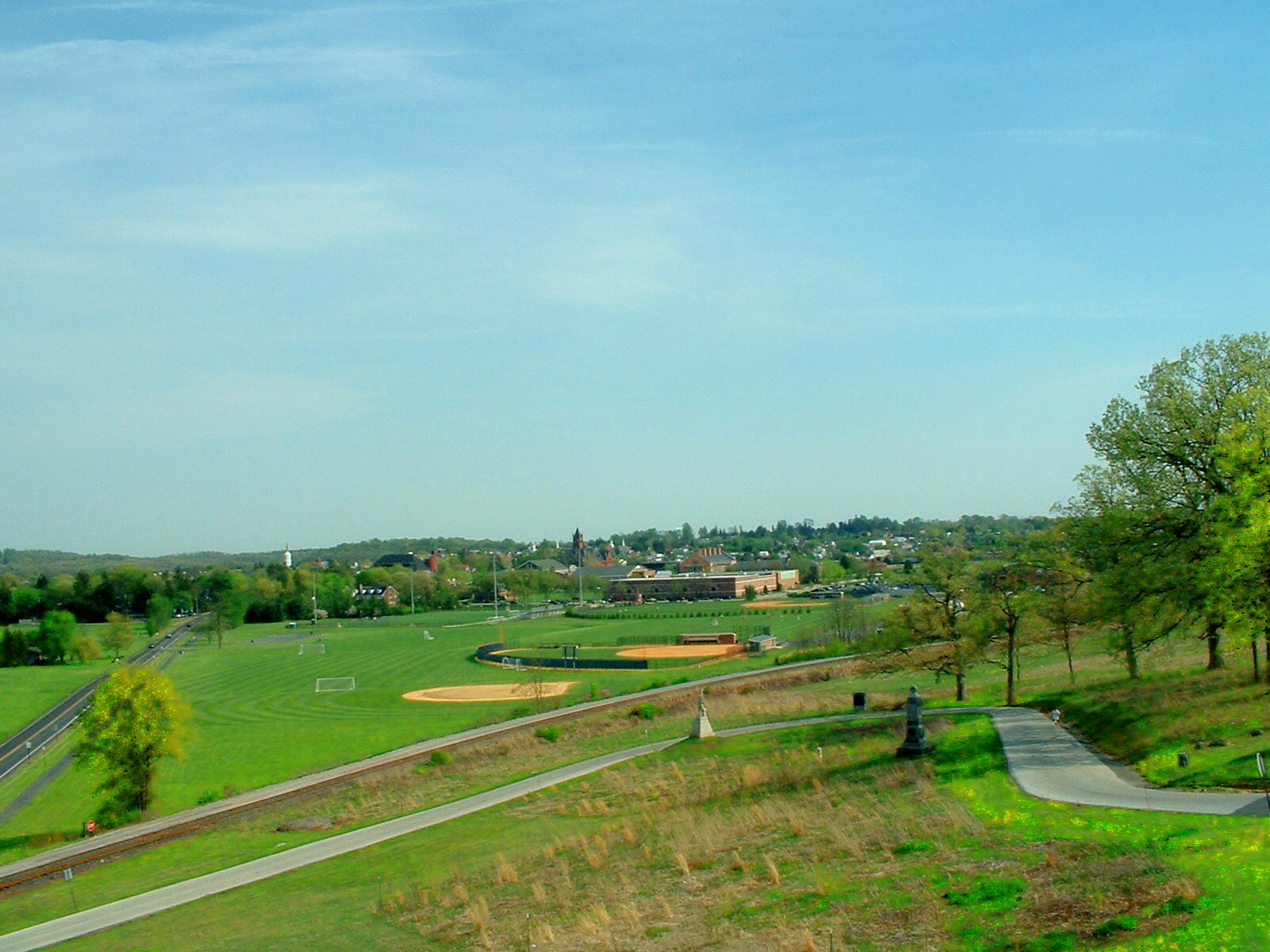
Coming
back along Seminary Ridge (so named because of Luther Seminary), the fighting
intensifies on the second day. Individual state monuments mark places
where units of militia fought. Being a native daughter of North Carolina,
I naturally had to take this picture of their monument, with the main
battlefield in the background:
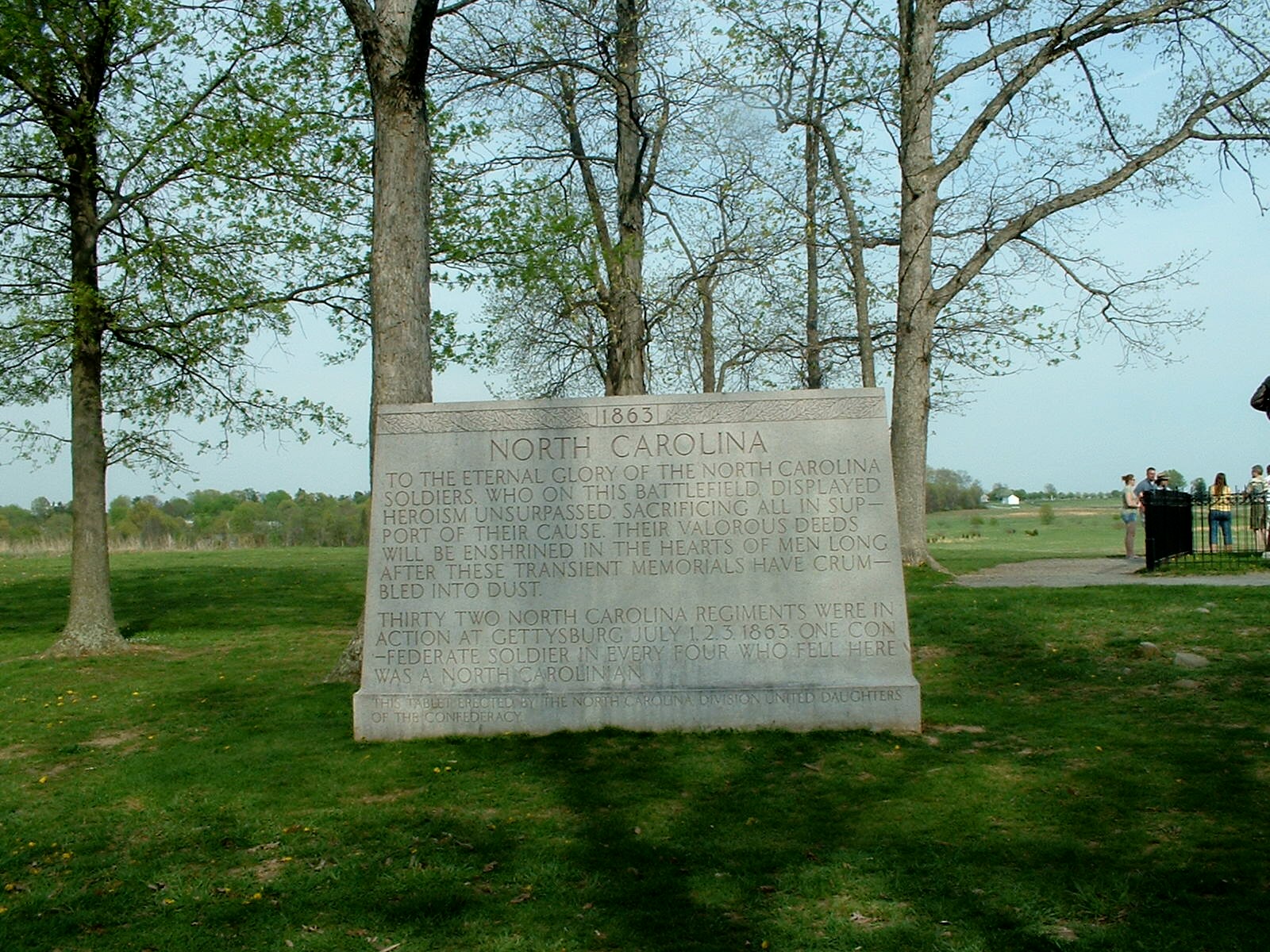
Moving
around the lines of battle, you come to a view of Little Round Top (on
the left) and Big Round Top (on the right). Heavy fighting on the slope
of Little Round Top and in the ravine in front of it, called "The
Valley of Death", made this one of the deadliest places to be during
the entire battle. In the second picture, taken from Little Round Top,
you can see the Devil's Den of rocks where Confederate sharpshooters hid
to harass Union forces in and below Little Round Top as well as "The
Valley of Death" between.
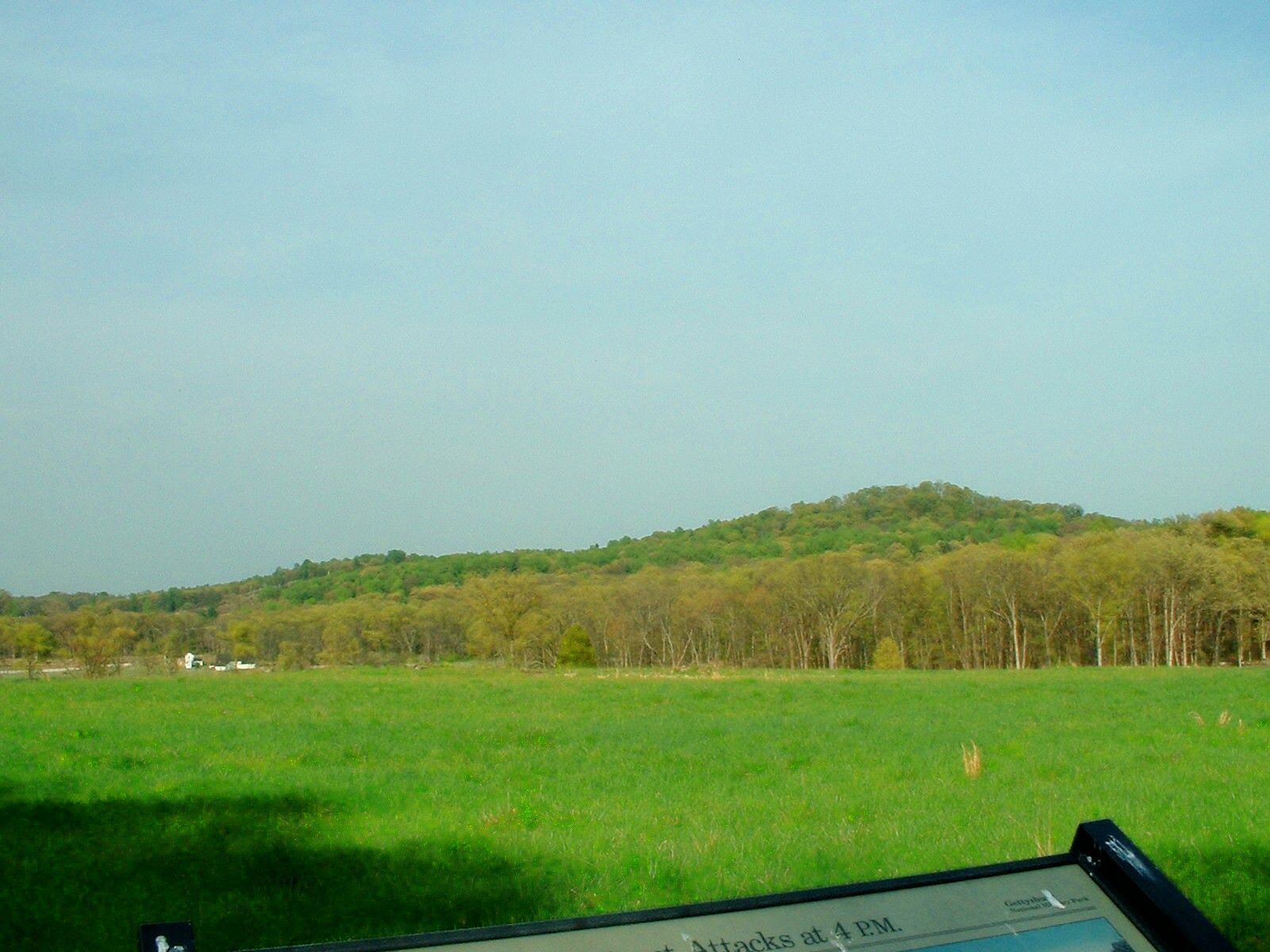
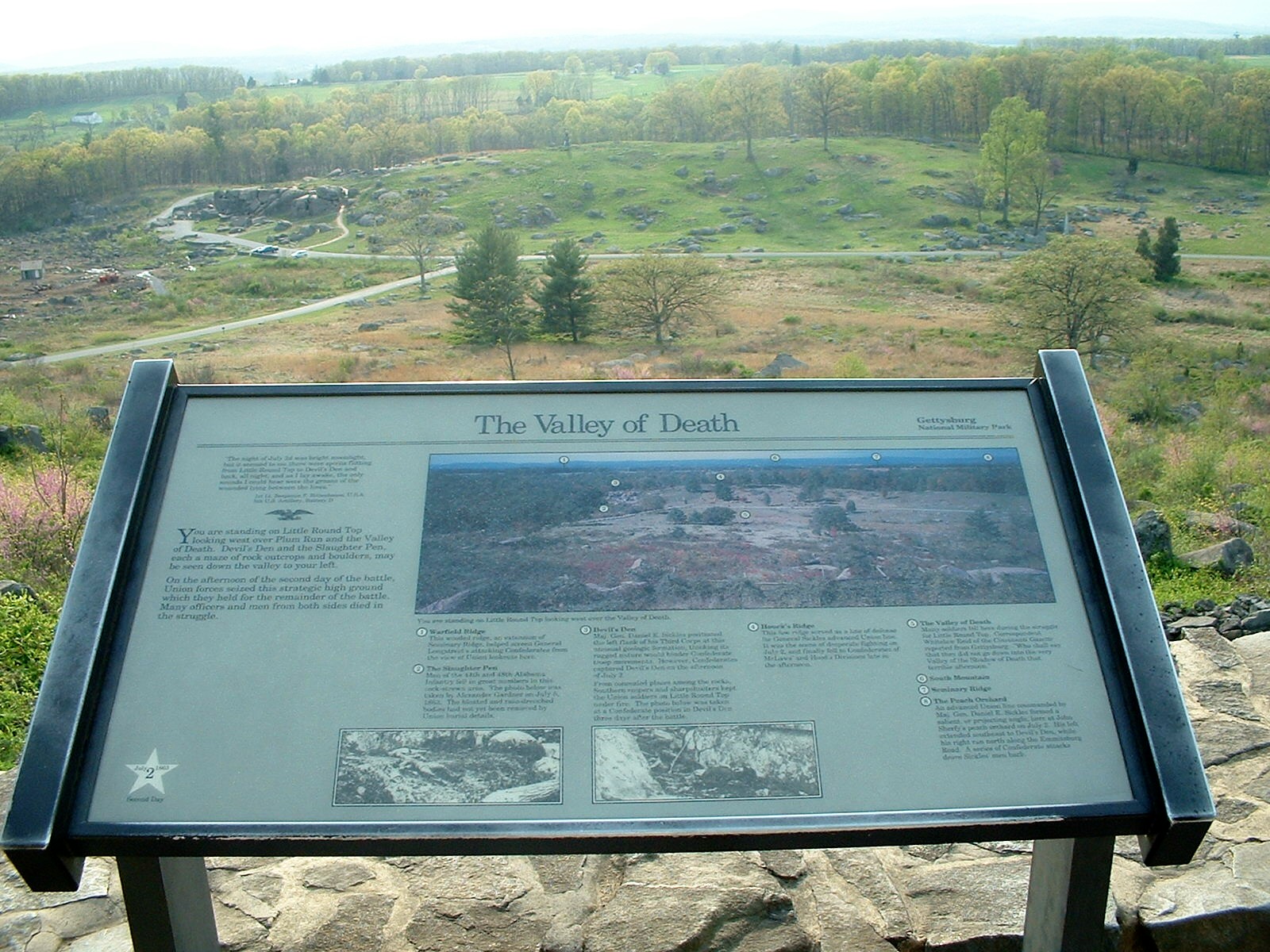
The
most prominent monument on the battlefield is that of the Pennsylvania
Militia, situated roughly in the middle of the Union lines and visible
from almost the entire southern half of the lines of battle. The center
of the Union line held on the second day because of very brave artillery
men who fought unguarded while troops all around them struggled to hold
ground in the face of the charging Confederate forces.
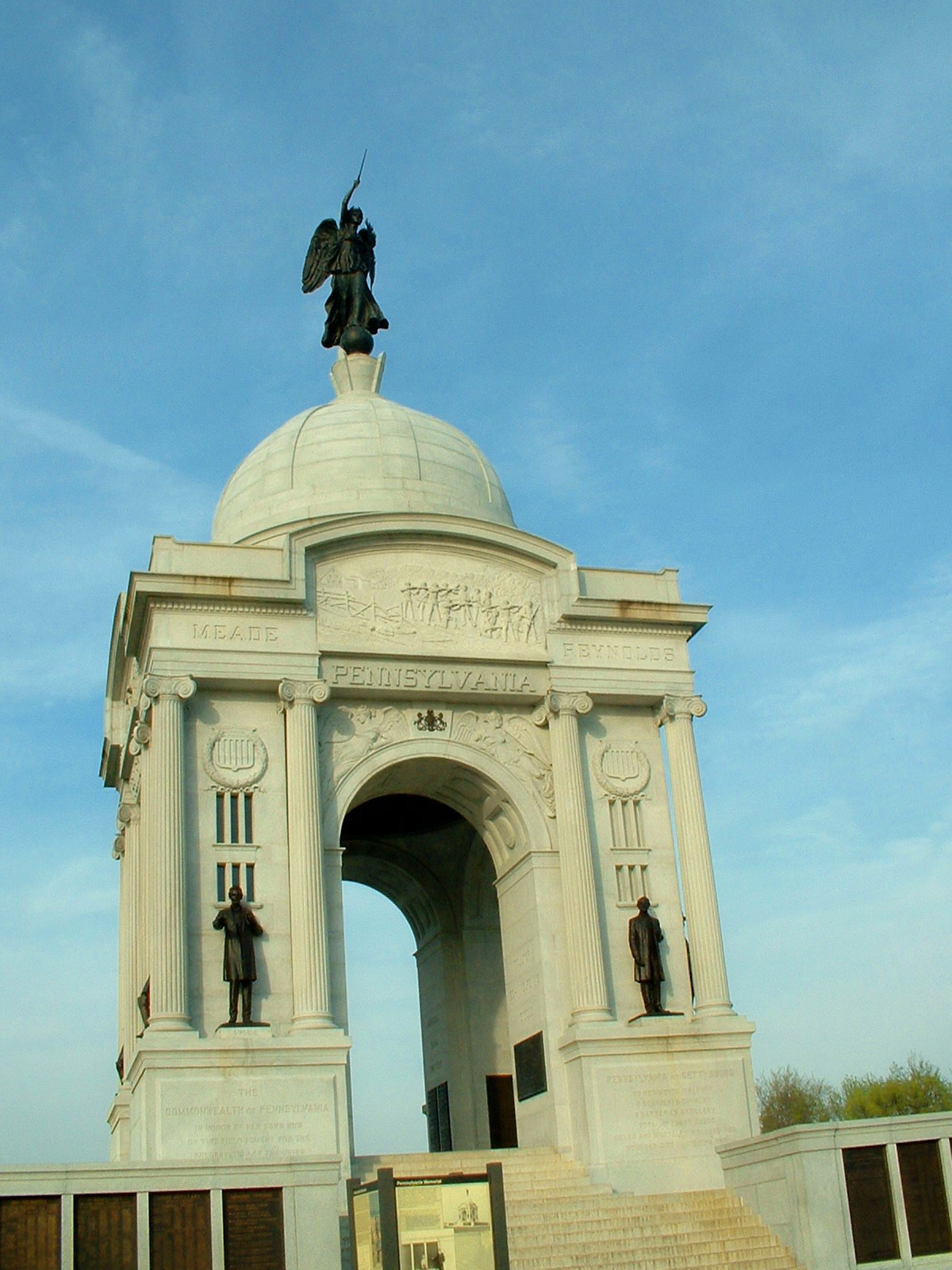
At the
eastern edge of the battlefield, Union forces fought and held overnight
an outcropping of rocks. Their actions at Spangler's Spring prevented
Confederate forces from penetrating the Union lines and encircling part
of all of the Union line of battle.
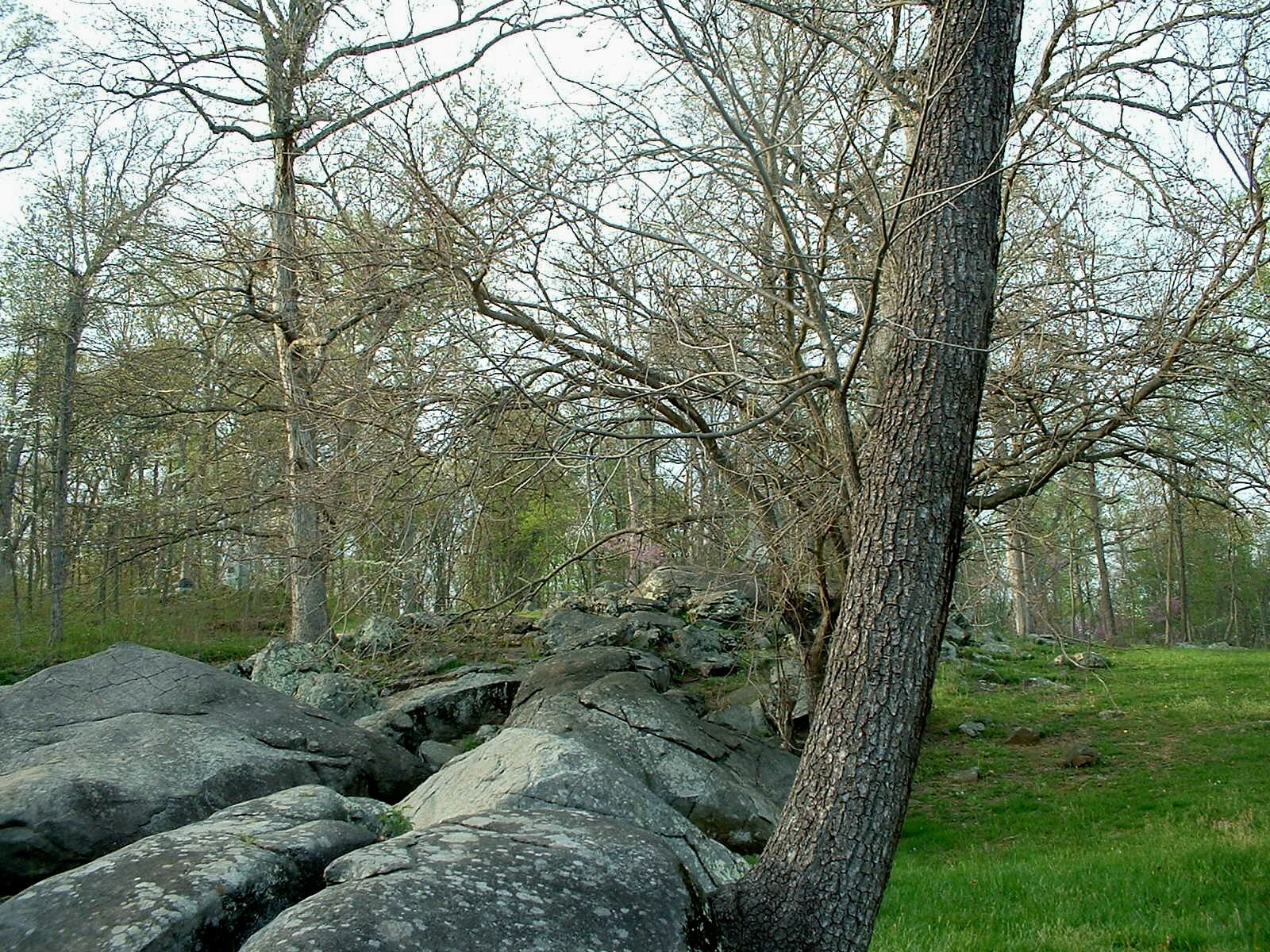
The
Confederate charge on day 2 didn't succeed, but it did force Union troops
back for a second day. General George Meade, commander of the Union forces,
determined that General Robert E. Lee's forces couldn't sustain another
day's battle like day 2. Rather than retreat from the battle, Meade and
his generals decided to hold the line and prepare for another assault
on their lines
The
third day included what has probably been the most famous part of the
Battle of Gettysburg: Pickett's Charge. My world history and government
teacher in high school was a nephew several times removed of General George
Pickett, whose men reached "The Highwater Mark of the Confederacy"
during the charge. The Visitor Center and Cyclorama occupy that point
now. Pickett's Charge failed; Lee knew that he could not justify further
fighting and ordered his troops to disengage. Confederate forces retreated
for the next two days in cold, pouring rain, leaving almost 28,000 dead,
wounded, missing and captured behind out of his 70,000 men. On the Union
side, 93,000 men began the battle; 23,000 were dead, wounded, missing,
or captured at the end of the day on July 3.
President
Lincoln didn't expect his speech on November 19, 1863, to be remembered.
He wasn't the keynote speaker at the dedication of the cemetery. He was
there primarily for the press attention, knowing that his appearance would
further his unflagging attempts to bolster morale around the country as
the tide continued to turn toward victory for the Union.
He didn't
count on the effect of his words overseas. Foreign journalists made sure
to get news of his short but powerful speech to their papers, which printed
extensive coverage of the dedication. France and England, which had been
ready to side officially with the Confederacy, instead remained neutral
throughout the war in part because of Lincoln's Gettysburg Address.
One
of the most moving monuments in the National Cemetery is a bronze reproduction
of Lincoln's handwritten address, one part of which is a fitting closing
to this site - at least until I go back and do the whole thing in more
detail!
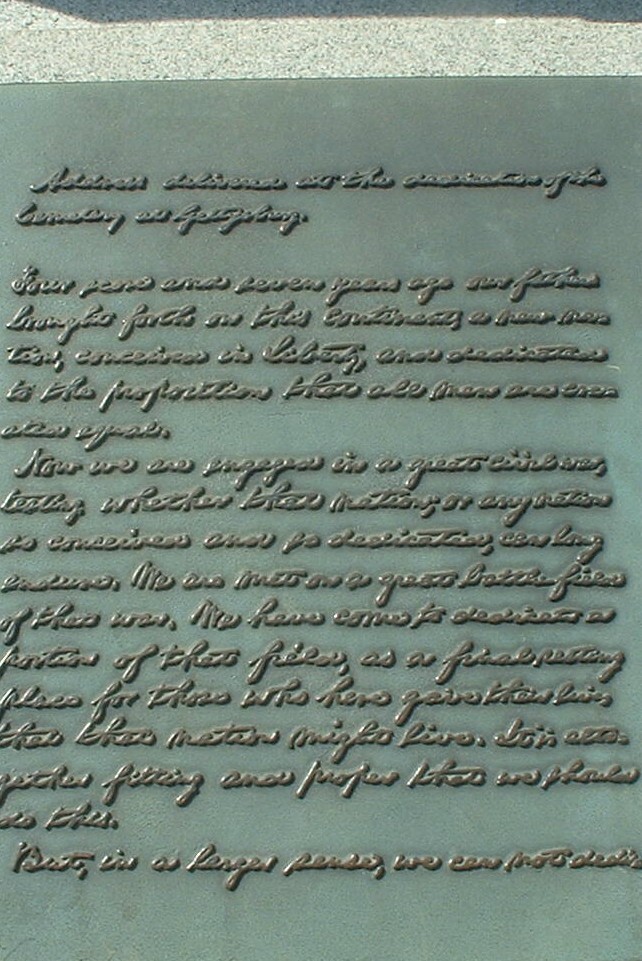
|
